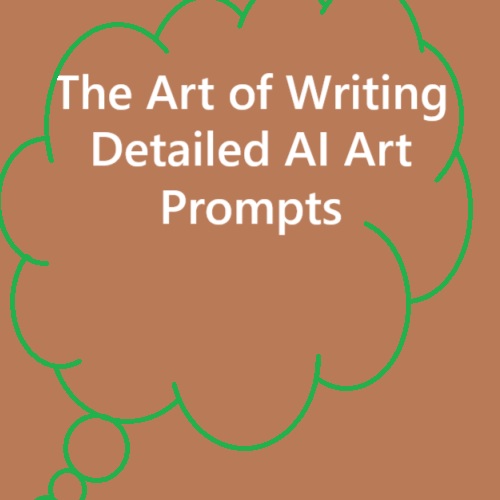Mastering the skill of crafting comprehensive AI art prompts is an essential aspect of the art of writing. By delving into the intricacies of this craft, one can unlock the potential to inspire and guide artificial intelligence in creating detailed and captivating artworks.
The process involves carefully formulating prompts that provide clear instructions and specifications, allowing AI algorithms to understand and interpret the desired artistic outcome. Through the art of writing detailed AI art prompts, creators can harness the power of technology to produce stunning and imaginative artworks that push the boundaries of creativity.
Artificial intelligence image generation has exploded in capability recently. But these AIs still require helpful instructions from users to render high-quality artworks. The key is learning how to write effective prompts that provide ample details to spark the AI’s creativity. Unlike humans, AIs lack all context about the world. They cannot infer what you imagine unless it is explicitly described.

Table of Contents
How to write AI Art Prompts
The prompt serves as critical directions that paint a clear picture for the AI. Providing more structure, descriptors, and aesthetic style will generate more accurate visuals aligned with your vision. This guide will break down the key elements of crafting detailed, descriptive prompts for AI art generation.
Prompt Structure
When writing a prompt, first consider the overall medium and composition. Specify if you want a photograph, digital illustration, painting, etc. Define the aspect ratio and overall size. Next, describe the main subject, including colors, pose, angle, proportions and other visual details. Explain the subject’s relationship with the background if applicable. Then set the scene by describing the environment, lighting, time of day, colors, and other background elements. Finally, specify the desired artistic style, including genres, movements, artists, tools, and techniques that define the aesthetics.
Describing the Subject
The prompt should provide vivid sensory details about the main subject. For a person, describe features like hair color/style, skin tone, facial expression, age, clothing style and colors, interesting accessories, and pose. For objects, explain the shapes, colors, textures, patterns, size, orientation, and position in space. Use descriptive language to spark imagination. Metaphors and conceptual ideas may be too abstract. The goal is to literately describe the exact visuals you want rendered.
Setting the Scene
Next, set the scene by describing the environment, lighting, time of day, weather, location details, and other background elements. Explain how the colors, textures, and details in the scene complement or contrast with the main subject. For example, a bright yellow flower as the focus surrounded by dark green leaves as the background. Add descriptive details like the time of day, intensity and direction of lighting, abstract shapes or patterns, models that interact with the main subject, and other objects that help set the tone and atmosphere.
Defining Style
Provide details about the desired artistic style for the AI to emulate. Name specific art genres, movements like impressionism or Art Deco, or individual artists that inspire the aesthetics. Explain if the image should look like a painting, drawing, 3D render, mosaic, collage, vector art, glitch art, low poly art, pixel art, or other mediums. Define the tools used, whether physical like oil paints, charcoal, clay; or digital like 3D modeling software, Photoshop, Painter, etc. Specify any techniques like brush stroke textures, filters, layers, mixing, lighting, and composition. For photos, list details like camera model, lens, aperture, filters, shot angle, lighting techniques.
Prompt Refinement
Prompt writing takes experimentation and refinement. Start general then add descriptive details layer by layer. Review the AI results and adjust the prompt for improvements. Finding the right balance of brevity and detail is key – too vague fails to provide needed direction, while an overly long prompt can also cause issues. Avoid using inappropriate, offensive, copyrighted, or suggestive content in prompts. Creative descriptive language aimed at general concepts will allow the AI to fill in the gaps with its own interpretations.
Writing effective prompts is crucial for producing quality AI generated art. Focus on structure, vivid descriptive language, defining aesthetic style, and iterating based on results. Prompting is a skill that improves over time as you learn what works best. With creativity and practice, you can unlock the full potential of AI image generation. Describing your artistic vision in detail to the AI is the key to creating amazing results.
Discover more from TechResider Submit AI Tool
Subscribe to get the latest posts sent to your email.







